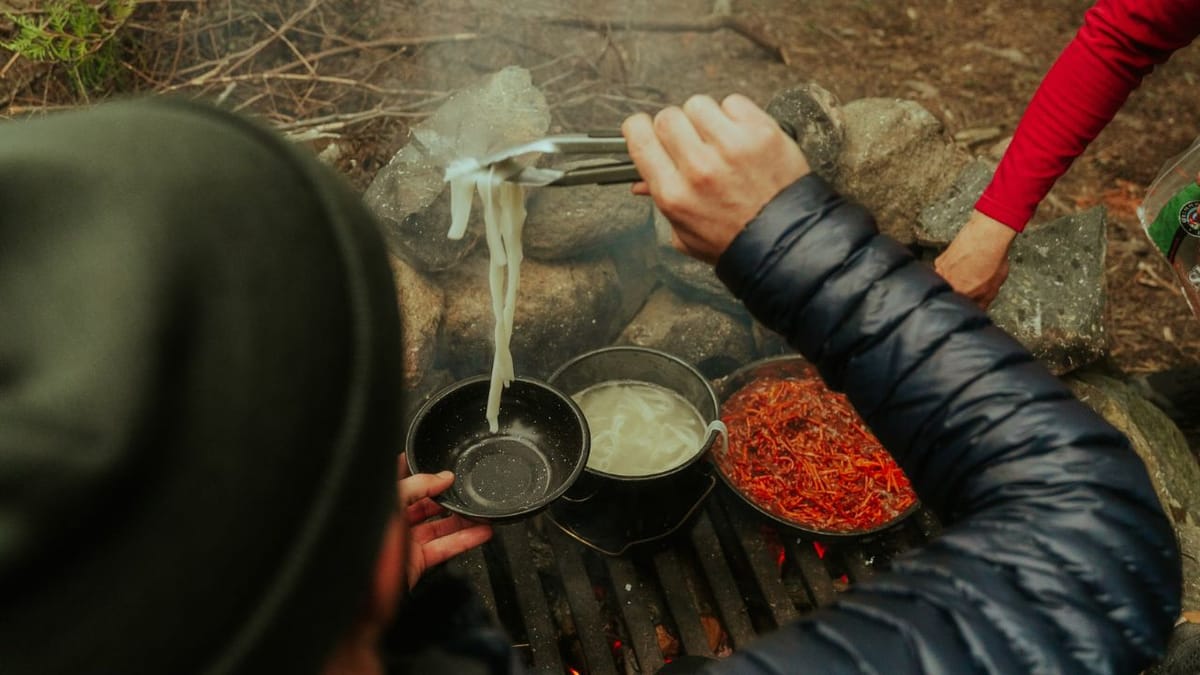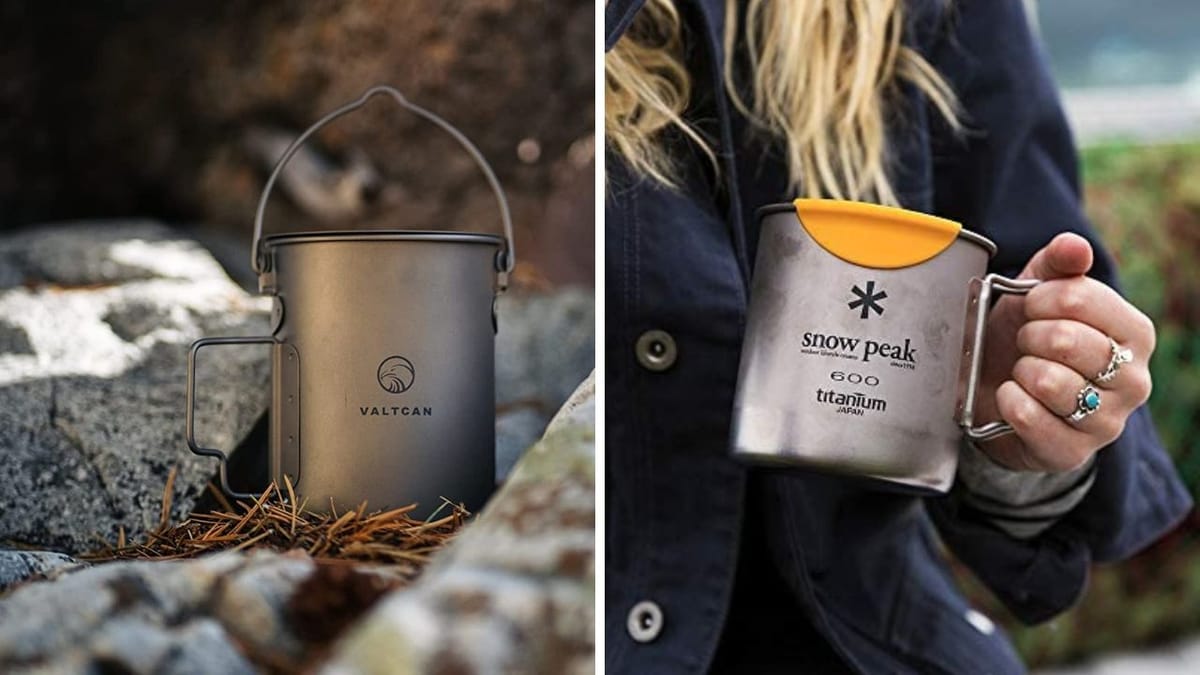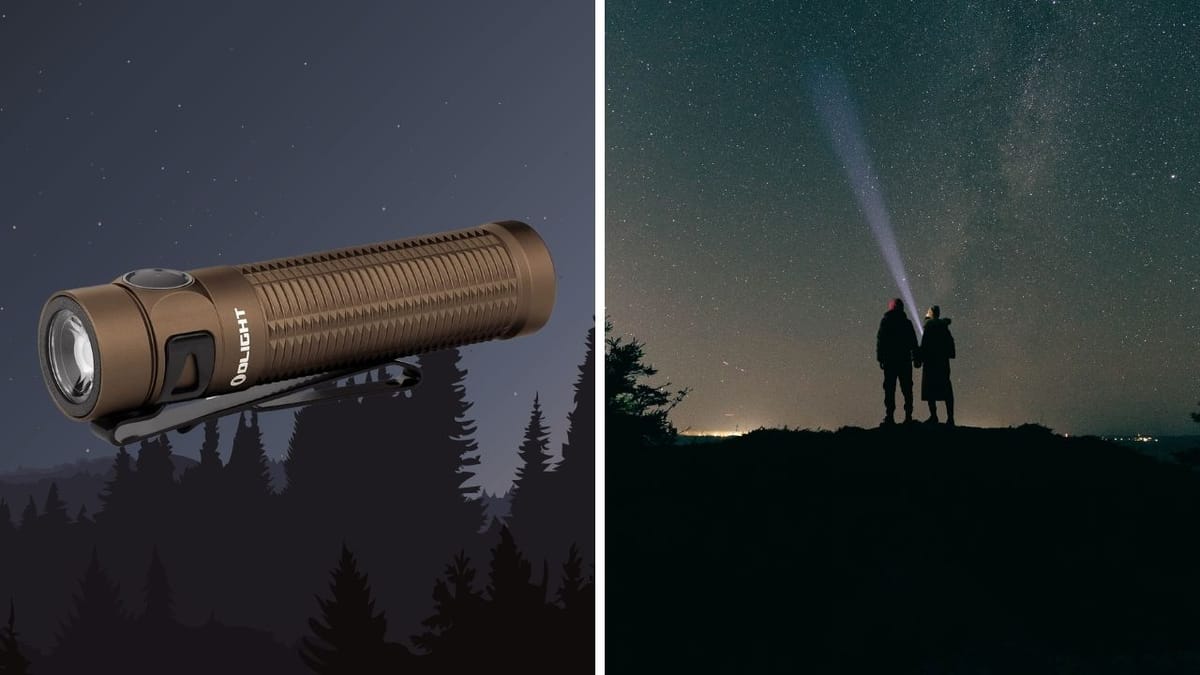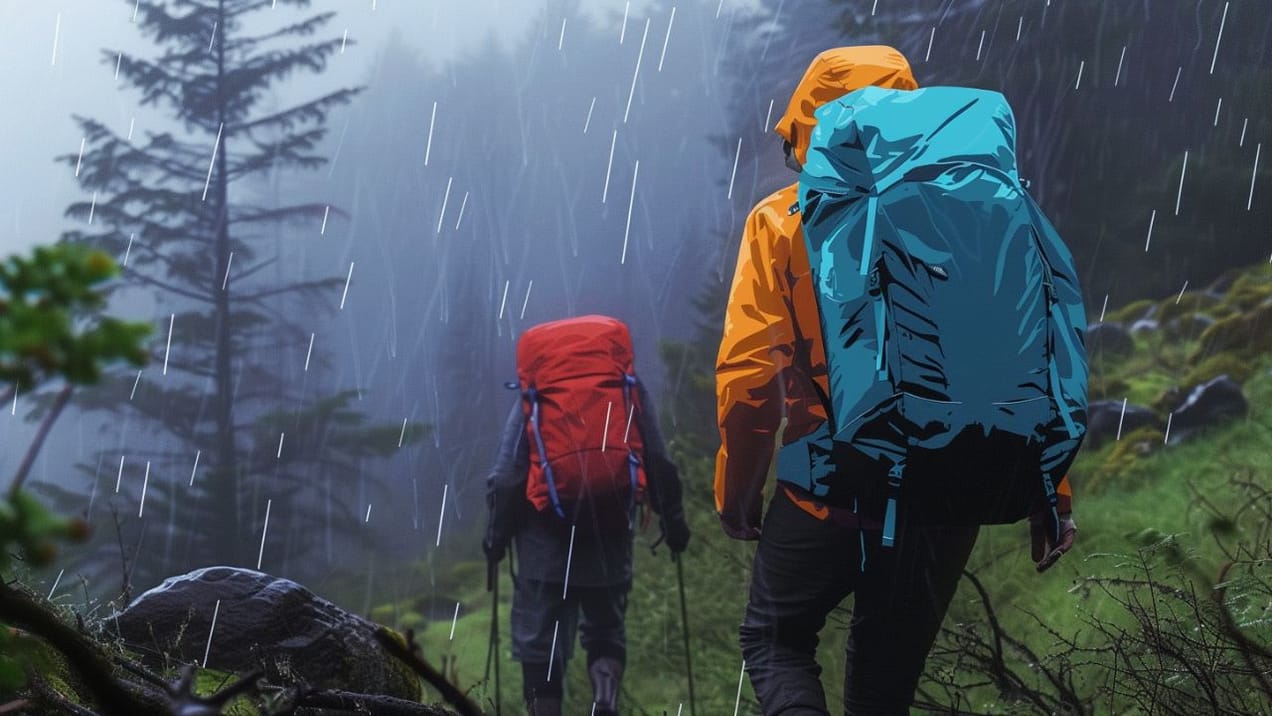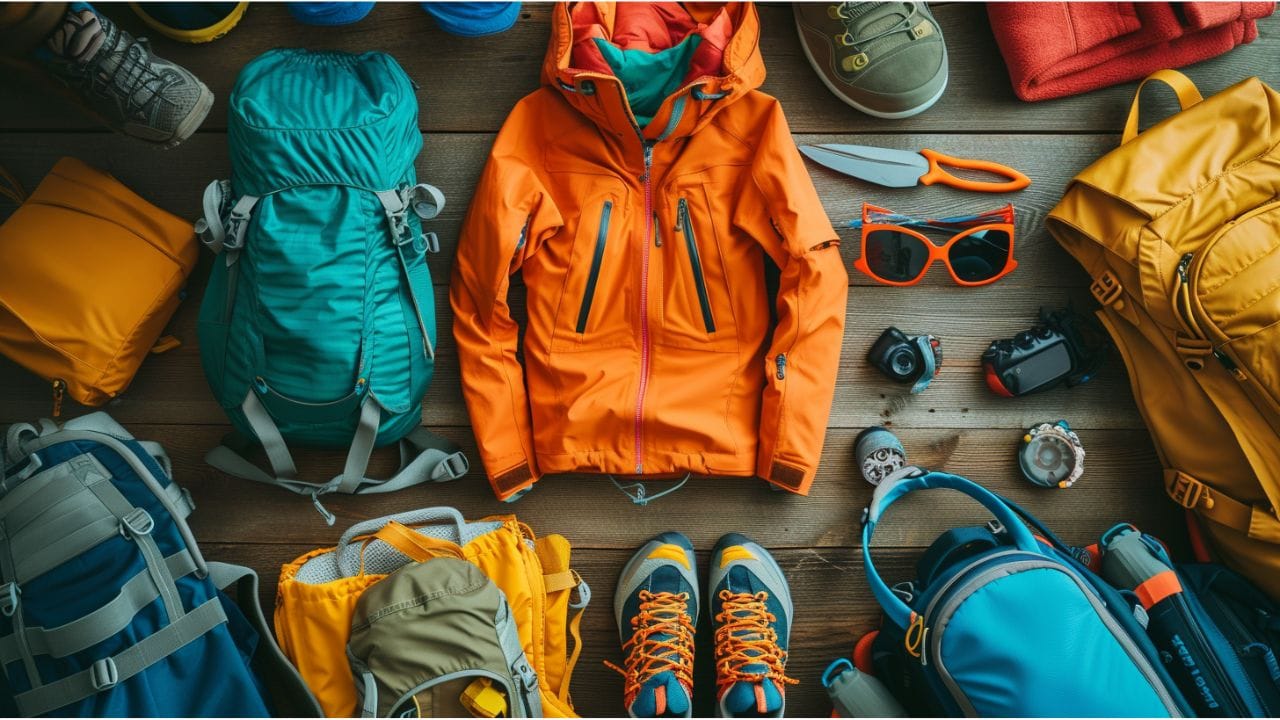
What to Wear Backpacking: Essential Clothing and Accessories Guide
Unsure about What to Wear Backpacking? Discover essential clothing tips for comfort and safety on your next outdoor adventure.
Backpacking is an exciting adventure that requires careful planning and preparation, especially when it comes to choosing the appropriate clothing.
Wearing the right clothes not only ensures comfort but also allows you to adapt to changing weather conditions and circumstances.
To help you enjoy your backpacking experience, it's important to invest in a versatile and functional wardrobe that can handle the unique challenges of spending extended periods of time outdoors.
When you're gearing up for your next backpacking adventure, you'll need to consider important factors such as the weather, the terrain, and the length of your trip.
These elements will dictate the type of apparel and layering system that best suits your needs. By selecting lightweight, moisture-wicking, and breathable fabrics, you'll stay dry and comfortable even when pushing through rigorous trails.
Key Takeaways
- Choose the right backpacking clothing for comfort, adaptability, and protection
- Invest in versatile and functional apparel suitable for various weather conditions
- Plan ahead by considering the weather, terrain, and length of your trip to make the right clothing choices
Understanding the Basics of Backpacking Apparel
Layering Principles
When planning your backpacking clothing, it's important to understand the principles of layering. Layering helps regulate your body temperature by trapping air between layers, providing insulation, and allowing moisture to escape. There are typically three layers to consider:
- Base layers: These are worn closest to your skin and should be made of moisture-wicking materials, such as synthetic fabrics or merino wool. Their primary function is to keep your skin dry by pulling sweat away from your body.
- Mid-layers: These provide insulation and are typically lightweight. Common mid-layer materials include fleece, down or synthetic fill jackets. They can be added or removed depending on the weather and your level of activity.
- Outer layers: Also known as shell layers, these protect you from wind, rain, and snow. They should be water-resistant or waterproof, and breathable to allow moisture from your base and mid-layers to escape.
Choosing Fabrics
Selecting the right fabrics for your backpacking clothes is crucial for comfort and performance. Here are some common fabric options to consider:
- Synthetic fabrics: Materials like polyester, nylon, or polypropylene are great options for base layers and some mid-layers. They are lightweight, moisture-wicking, and dry quickly.
- Merino wool: This natural fiber provides excellent moisture management, temperature regulation, and odor resistance. It's a popular choice for base layers and hiking socks.
- Down and synthetic insulation: Both down and synthetic insulation materials are used in mid-layers to provide warmth. Down is lighter and more compressible, but loses its insulating properties when wet. Synthetic insulation, on the other hand, maintains its warmth when wet and dries faster.
Weather Appropriateness
An essential aspect of choosing the proper backpacking clothing is considering the expected weather conditions during your trip.
Be prepared for a range of temperatures and precipitation by packing the appropriate layers, as well as additional items like rain jackets, hats, and gloves. Keep in mind that cold weather can even occur during summer months in high elevations or at night, so it's always a good idea to bring an insulating layer as a precaution.
Remember to consider UV protection, especially at higher altitudes or during extended periods of sun exposure. Lightweight, long-sleeve shirts with UPF protection can help shield your skin from harmful rays.
By following these guidelines and adapting your clothing choices to suit the weather and your specific needs, you can ensure a comfortable and enjoyable backpacking experience.
Essential Items for Any Backpacking Trip
Footwear Selection
Selecting the right footwear for your backpacking trip is crucial. Two popular options are hiking boots and trail runners.
Hiking boots offer more ankle support and are ideal for uneven terrain, while trail running shoes provide better breathability and are usually lighter.
Always wear high-quality hiking socks designed with moisture-wicking properties to keep your feet comfortable and dry. In some cases, you might also consider bringing hiking sandals for river crossings or relaxing at camp.
The Core Outfit
Your core outfit should be functional and versatile. Start with a short-sleeved t-shirt or hiking shirt designed with moisture-wicking properties.
Layering is key when it comes to backpacking clothing.
Add a long-sleeved shirt for sun protection and insulation, and consider hiking pants or convertible nylon pants for lower body coverage. These can easily be converted into shorts when needed.
In cooler environments, it's essential to have a puffy or down jacket for warmth. Opt for a lightweight option that can easily be packed into your backpack.
For women, a comfortable sports bra is recommended. Choose materials with moisture-wicking properties to ensure comfort throughout your trip.
Rain is always a possibility when backpacking. Invest in quality rain gear, such as waterproof rain jackets and pants to ensure you stay dry if caught in a downpour.
Additional Accessories
Accessories are important for a comfortable and safe backpacking experience. Wear a warm hat and lightweight fingerless gloves for chilly mornings and nights. A sun hat will provide essential sun protection during warmer months.
Always pack long underwear for extra insulation and comfort during the night. Consider clothing made with moisture-wicking properties for optimal comfort throughout your trip.
Finally, don't forget important items such as sunglasses, a bandana or neck gaiter for sun and dust protection, and a small towel for cleaning up or cooling down.
By considering this information and choosing the appropriate clothing and accessories, you can greatly enhance your overall backpacking experience.
Adapting to Changing Weather Conditions
For Cold Climates
When backpacking in cold weather, it's essential to stay warm and protect your body from losing too much heat. Wearing appropriate clothing for cold weather conditions will ensure you stay comfortable and can enjoy your outdoor adventure.
Layering is a technique that can help you regulate your body temperature effectively. It is important to invest in warm socks, such as wool socks, and opt for warm clothing like wool underwear and wool gloves.
An insulating layer, ideally made of fine merino wool, can be highly effective in retaining body heat.
For Warm Climates
In warm or hot weather conditions, it's essential to stay comfortable and avoid overheating. Breathable, moisture-wicking fabrics are ideal for such climates.
Choose lightweight clothing made from materials like polyester, nylon, or merino wool that can wick away sweat, allowing your skin to breathe and helping to regulate your body temperature.
Remember to protect yourself from the sun by wearing a hat and applying sunscreen to exposed skin.
Navigating Rainy Environments
Rain can be unpredictable, so it's important to be prepared for wet weather conditions while backpacking. Before starting your trip, check the weather forecast and carry a rain jacket and rain pants as part of your gear.
Opt for a waterproof outer layer that's also breathable, allowing you to stay dry without feeling suffocated. In addition, pack extra clothing and ensure that it stays dry by using waterproof bags or containers.
By considering the different weather conditions you might encounter during your backpacking trip, you can make smart clothing choices to ensure you stay comfortable, safe and enjoy your time outdoors.
Special Considerations for Comfort and Safety
Protecting Against the Sun
When planning a backpacking trip, it's crucial to consider sun protection. Opt for long-sleeve shirts with added neck protection, such as a shirt with an adjustable hood.
Choose clothing made of materials that wick moisture, like synthetic t-shirts, to keep you dry and cool.
A wide-brimmed hat or a cap with an extended neck flap will shield your face and neck from the sun and help you stay comfortable on the trail.
Maximizing Comfort on the Trail
Having a well-planned hiking outfit contributes to a more enjoyable experience. Lightweight, breathable clothing and layers can save weight in your pack and allow you to adjust to changing weather conditions.
When it comes to footwear, choose hiking shoes or boots designed specifically for hiking. They will provide better traction and support than everyday shoes or sports trainers.
- Tops: Lightweight, moisture-wicking materials, preferably with UV protection.
- Bottoms: Convertible pants like zip-off pants, or comfortable yoga pants.
- Undergarments: Quick-drying and moisture-wicking materials.
- Socks: Carry at least one extra pair of socks to keep feet dry and comfortable.
Ensuring Visibility and Protection
Visibility and protection are essential for a safe backpacking experience. Bright and reflective clothing, as well as gear with high-visibility features, can help you stay visible to other hikers and avoid accidents on the trail.
When selecting a backpack, opt for one with straps that do not chafe or irritate your skin. Backpack straps should be adjustable and padded for added comfort.
Choose gear that's both durable and lightweight, ensuring that your pack doesn't weigh you down while still providing adequate protection from the elements.
Packing Tips and Tricks for Efficient Backpacking
Balancing Weight and Necessity
When planning for a backpacking trip, it's essential to carefully consider what items to bring along. Striking a balance between weight and necessity is crucial for comfort and efficiency.
One way to save weight is to analyze your gear list and eliminate non-essential items.
For example, opting for a lightweight sleeping bag can make a significant difference in your pack's overall weight.
Remember, every ounce saved adds up and contributes to an easier and more enjoyable experience on the trail.
Keeping Your Sleeping Bag Fresher
Keeping your sleeping bag fresher during backpacking trips can be achieved with a few simple techniques.
When packing your backpack, store lightweight items, such as clothes, at the bottom of your pack directly on top of the sleeping bag.
This approach not only helps with internal shock-absorption for your back but also allows for better airflow, ultimately keeping your sleeping bag fresher.
Additionally, consider using a sleeping bag liner to keep the interior clean and extend the life of your sleeping bag.
Clever Clothing Choices
Selecting the right clothes to wear backpacking is critical to ensure both comfort and functionality during your journey.
Avoid cotton clothing, as it retains moisture, takes longer to dry, and can lead to increased body odor. Instead, opt for moisture-wicking fabrics like synthetic or Merino wool materials.
Layers are your best friend on a backpacking trip, so pack a reliable base layer, insulation (or mid layer), and an outer layer that protects against wind and rain.
Features such as pit zips can help with ventilation and help regulate your body temperature during strenuous activity or in dense brush. By making smart clothing choices, you'll stay comfortable and well-prepared for any conditions encountered during your backpacking adventure.
Frequently Asked Questions
How do I choose functional clothing for different backpacking destinations?
When selecting clothing for backpacking, consider the destination's climate, terrain, and expected weather conditions. Opt for moisture-wicking, quick-drying, and breathable fabrics like polyester and merino wool that keep you dry and comfortable. Insulating layers are crucial for colder environments, while sun protection and ventilation are important in hot or sunny locations.
What are the essential clothing items for a backpacking trip?
The basic items to include in your backpacking wardrobe are:
- Moisture-wicking base layers (tops and bottoms)
- Mid-layers for insulation (fleece or down jackets)
- A waterproof and breathable shell (jacket and pants)
- Hiking boots or shoes
- Socks and underwear (moisture-wicking and quick-drying)
- Hats (sun protection and warmth)
- Gloves and gaiters, depending on conditions
What factors should I consider when picking ultralight clothes for backpacking?
For ultralight backpacking, prioritize clothing that is versatile, lightweight, and compressible.
Look for items made from high-performance materials that offer a combination of warmth, moisture management, and breathability.
Layering is key, allowing you to adapt to changing temperatures and conditions with fewer items. Choose clothes that can serve multiple purposes, such as convertible pants or a buff that functions as a scarf, headband, or hat.
How can I maintain a good appearance while minimizing my backpacking wardrobe?
To maintain a polished appearance, select neutral colors and versatile pieces that can be easily mixed and matched. Stick to items that resist wrinkles and odors, like merino wool and polyester blends. A few well-chosen accessories can add variety and style while occupying minimal packing space.
What are some recommended clothing brands specialized for backpackers?
Several brands cater to the specific needs of backpackers. Some popular options include:
- Patagonia
- The North Face
- Outdoor Research
- Arc'teryx
- Mountain Hardwear
Each brand offers different styles, materials, and technologies, so explore their offerings to find the best fit for your needs.
How many outfits are typically needed for a long-term backpacking journey?
For long-term backpacking trips, it's generally advised to pack one set of clothes to wear during the day and another for sleeping, with some exceptions for socks and underwear.
This minimalist approach minimizes weight and bulk while allowing for regular laundering and airing out of garments. Consider packing one extra outfit for emergencies or a change of environment.
Before You Go...
